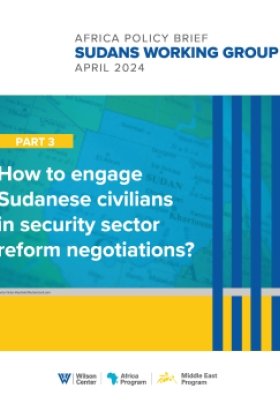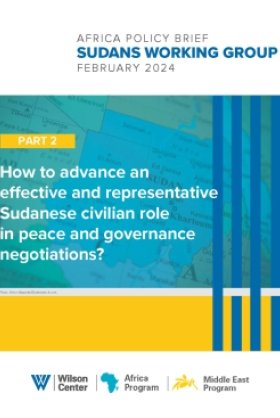The Great Game That Won't Be
This article is part of a monthly series for Foreign Policy by Michael Kugelman that highlights possible post-2014 scenarios for Afghanistan.

Several years ago in New Delhi, a retired Indian Army brigadier warned me that China and India could one day go to war. Not over territory, as they did in 1962, but over natural resources. In the Bay of Bengal.
Situated off the coasts of India, Bangladesh, and Burma, the Bay of Bengal abounds with hydrocarbons (mainly petroleum and natural gas), minerals (including zircon and manganite), and rare earths. China is on the prowl for these precious goods (particularly the hydrocarbons) and has already secured natural gas assets in the region. New Delhi, which is in the hunt for these same goods (like China, it especially covets the hydrocarbons), has long regarded the Bay of Bengal as its backyard. If this trend continues in the coming years, my Indian interlocutor explained, hostilities could erupt.
China and India, keen to provide for their billion-strong populations and fuel their growing economies, are locked in a global race for natural resources -- mainly oil and gas, but also other energy sources as well as minerals. This pursuit extends from the Indian Ocean and sub-Saharan Africa to Central and Southeast Asia -- and even to the Arctic. Both countries have undertaken naval modernizations meant in part to facilitate the acquisition of far-flung sea-based natural resources. This competition is further sharpened by the perception in New Delhi that India often loses out to China in efforts to secure bids -- including, last year, for an 8.4 percent stake in the mammoth Kashagan oil field in Kazakhstan.
Given each country's insatiable need for natural resources, new sources of supply will continuously be in demand. And on this note, Afghanistan would seem a logical destination.
After all, Afghanistan has plenty to offer. The landlocked nation can't provide offshore oil fields, but it does boast up to $3 trillion worth of natural resources, including minerals such as copper, gold, lithium, and various rare earths. In 2012, the U.S. Geological Survey mapped the location of Afghanistan's surface minerals by air, enabling investors to know exactly which minerals are available and where.
Additionally, China and India are already actively investing in the Afghan mineral sector. China's state-owned Metallurgical Group Corp. (MCC) has a contract to exploit the Mes Aynak copper mine in Logar province (25 miles from Kabul), while an Indian consortium led by the state-owned Steel Authority of India Ltd. (SAIL) has a deal to exploit iron ore in the Hajigak region of Bamiyan province (60 miles from Kabul). These two projects constitute the single largest economic investments in Afghanistan.
Finally, resource investments in Afghanistan are in line with existing Indian and Chinese policies. A strategic agreement concluded by New Delhi and Kabul in 2011 pledges cooperation on mining. Meanwhile, for China, investment in Afghanistan contributes to its broader policy of initiating development and infrastructure projects to its west.
So what's to stop Afghanistan from becoming a new ground zero for the China-India battle for resources?
One word: instability.
In recent months, Beijing and New Delhi have suggested they aren't comfortable investing in such an unstable country. MCC officials (and workers) have expressed concern about security, as well as about the Taliban's demands for protection money. MCC is now renegotiating its contractual terms for Mes Aynak so that it is no longer obligated to build a railway, processing factory, and the other infrastructure needed to support mining. Today, the investment site is quiet.
India, meanwhile, has even greater fears given the frequency with which Indians are targeted by militants in Afghanistan. New Delhi's embassy in Kabul was attacked in 2008 and 2009, and its consulate in Jalalabad was assaulted in 2013. In 2010, militants struck a guesthouse mainly used by Indians. Not surprisingly, as early as last November, Indian investors involved in the Hajigak project were threatening to dramatically reduce spending, owing to security concerns, and SAIL's chairman denied the deal was even final. Ultimately, though, this is all immaterial: Because the Hajigak project would require the use of the same railway that MCC has claimed it no longer intends to build, the future of the Indian investment is deeply imperiled.
At first glance, such uneasiness about security is surprising. Both countries have pushed forward with development projects in harsh security environments elsewhere in the world. China has remained committed to various investments in Pakistan, including the construction of Gwadar port in Baluchistan, even after Chinese laborers were killed. Similarly, Indian investors have continued to pursue large-scale agricultural projects in Uganda even after locals opposed to one of these projects killed an Indian national.
In truth, other factors are hampering these investments as well. Falling copper prices are making investments less profitable, a lack of locally available phosphate is complicating refining processes, and cooling Chinese and Indian economies are making the large-scale projects more difficult to sustain. In the case of Mes Aynak, the Chinese also claim they are hesitant to push forward given the mine's close proximity to the remains of an ancient Buddhist city (some commentators, however, are skeptical that China genuinely cares about preservation concerns).
Still, the hesitations of China and India ultimately come back to security fears -- fears that go beyond the mere personal safety of investors and their projects. China is increasingly concerned that Uighur militants are using Afghanistan (and Pakistan) as a sanctuary. It's a concern that has taken on added urgency amid a recent rash of attacks in China -- including a knifing incident at a railroad station and a vehicle that plowed into Tiananmen Square -- that Beijing blames on Uighur extremists. As a result, in the words of writer William Dalrymple, "Beijing now views Afghanistan more as a security problem than an economic opportunity."
For India, the problem is Pakistan. New Delhi is well aware that the Pakistani security establishment is uncomfortable with India's activities in Afghanistan. Indian officials are reluctant to leave a large footprint in Afghanistan for fear of provoking Pakistan -- or more specifically, provoking Pakistani proxies such as the Afghan Taliban and Haqqani network. U.S. intelligence officials believe that the Haqqani network executed the 2008 attack on the Indian Embassy in Kabul and that the ISI -- Pakistan's main spy agency -- helped plan it.
To be sure, India's probable next prime minister, Narendra Modi, expresses more hawkish views toward Pakistan than does outgoing premier Manmohan Singh. Accordingly, Modi likely wouldn't feel as strong of a need to restrain Indian investment activities in Afghanistan so as to avoid invoking Islamabad's ire.
Still, Indian national security interests will necessitate caution, because India will likely face even greater threats in Afghanistan after this year. With international troops leaving Afghanistan and its military still struggling to tame a Taliban-led insurgency that continues to enjoy a sanctuary in Pakistan, the security situation figures to worsen in 2015.
An Afghanistan that is off-limits to large-scale, foreign-led resource investment would not necessarily be a bad thing. For all the talk of how exploiting Afghanistan's bountiful reserves could boost employment, generate much-needed new infrastructure, and strengthen the economy, there are no assurances that these benefits would actually accrue -- or that mineral revenues would be appropriately shared with Afghan communities. Given Afghanistan's widespread corruption, this simply may be asking too much. Investor practices, such as China's tendency to use its own laborers in extractive industry investments overseas, also underscore how the purported benefits for common Afghans may be overstated. A new mining law meant to address some of these concerns is languishing in Afghanistan's parliament.
The geopolitical upshot of an inhospitable investment environment is a convergence of Chinese and Indian interests. Beijing and New Delhi have a strong, shared interest in a more stable Afghanistan -- an outcome that would presumably make the country less hospitable for anti-China and anti-India militants and that would enable both nations to pursue the natural resource investments needed by their large economies and populations.
For this reason, a strategic shift could take shape after 2014: India begins to move closer to its Chinese rival. In fact, there are indications that this is already happening. In October, the two sides concluded a border defense cooperation agreement, and in recent days they have pledged to deepen cooperation through regular high-level military dialogues and tighter naval links. And an Indian diplomat recently told me that Beijing is now seeking New Delhi's counsel on how best to approach the terrorism problem in Afghanistan.
This emerging goodwill raises the possibility that, if the two countries are ever in a position to intensify their resource investments in Afghanistan, they would cooperate instead of compete. It's been done before elsewhere -- including through joint energy investments in Colombia, Syria, and Sudan.
Could this calculus change? Certainly. Under a Prime Minister Modi, there could be considerable limits to China-India rapprochement. The election manifesto of Modi's BJP party warns: "In our neighbourhood … where required we will not hesitate from taking strong stand[s] and steps."
Additionally, those closely watching China's activities in Afghanistan believe it's just a matter of time before Beijing's investments ramp up again, regardless of the security situation. Brent Huffman, a documentary filmmaker and Northwestern University professor currently producing a feature-length documentary about China's Mes Aynak investment, tells me that MCC's work there is only temporarily delayed. "The threat to leave Mes Aynak was an empty one," he says. His prediction? China will be mining at Mes Aynak "in the near future."
If this happens, don't expect India to do all that much in response. With an emboldened Afghan Taliban, Haqqani network, and other formidable anti-India forces flexing their muscles in Afghanistan amid the withdrawal of international troops, New Delhi will be obliged to take a rigidly risk-averse position -- and to grudgingly concede yet another victory to China in the ongoing race for the world's natural resources.
China and India may one day go to war over those resources in the Bay of Bengal. Yet in Afghanistan, there's very little reason to believe they will even compete for them -- much less fight over them.
This article originally appeared on ForeignPolicy.com.
About the Author


Indo-Pacific Program
The Indo-Pacific Program promotes policy debate and intellectual discussions on US interests in the Asia-Pacific as well as political, economic, security, and social issues relating to the world’s most populous and economically dynamic region. Read more










